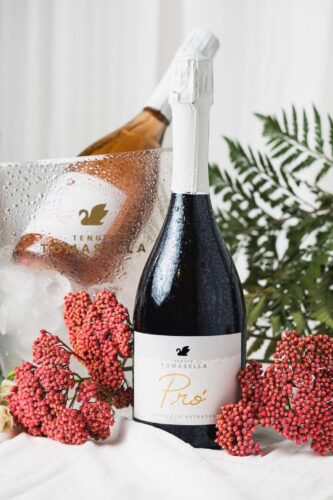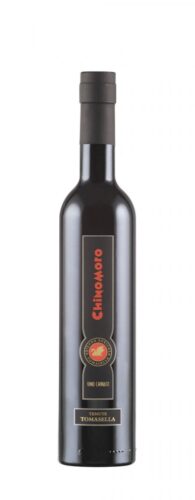Tenute Tomasella Winery on the border of Prosecco and Friuli
Can’t remember the last time a Prosecco hit me like this—startlingly fruity, big texture, yet with typical floral notes as well. The winery that makes this is like that too: more than you’d expect, and perhaps a little gentler too. Tenute Tomasella inhabits a square-towered, red and white castle, built as a villa for a prominent Venetian family over a hundred years ago. Anyone can visit, just sign up for one of the tours or “experiences” on the website.
In 1965 Luigi Tomasella acquired this estate in northern Italy, on the border of the Veneto (including the Prosecco region) and Friuli Venezia-Giulia (aka Friuli). Luigi’s son Paolo, who took over about 25 years ago, makes wines from both regions.
Now Paolo has also taken 1.7 hectares (about four acres) of land and re-wilded it to flowers and trees, recently adding 15 beehives. The bees are to maintain health and sustainability here; the Tomasella family doesn’t sell honey. The entire estate is being converted to organic, and will receive its full certification by the 2026 vintage.
In terms of wine, Paolo’s aim is for “elegance” and “smoothness.” He’s also added an extra step or two during production to give the wines notable texture and roundness. For instance, some of the glera [the “prosecco” grape] in the prosecco is put through an additional, malolactic fermentation, to add a creaminess to the finished wines. And he ages his wines in bottle for a decent length of time before releasing them on the market.

Right now, 50% of the winery’s output of 120,000 bottles a year is consumed in Italy, and most of the rest goes north to nearby European countries. You can get some of Tenute Tomasella’s Prosecco in the US already, and I wouldn’t be surprised if more of the wines are on their way here soon.
THE WINES
Rosé Prosecco
NV Prò Rosé Prosecco DOC, Spumante Extra Dry, was the first Tenute Tomasella wine I tried. It is wonderfully fruity, as well as floral, with a distinct roundness on the palate. It’s made with 85% glera [the white “prosecco” grape] and 15% pinot noir, each fermented separately. This super-structured sparkling wine pairs well with many types of dishes, from seafood to salami, even a strongly flavored antipasto like Sicilian caponata (one of my favorite foods).
A Big White: Friulano
The 2023 Friulano, Friuli DOC also has great body, heartier than one might expect from this grape. Definitely fruity, yet flexible with food pairings: antipasti, first courses and light meals. Bonus: once opened, it held up in the fridge for days, with consistently fine flavors.
Merlot-based Rigole Rosso
Tenute Tomasella’s signature wine is called Rigole Rosso. I tasted the 2022 Rigole Rosso Trevenezie IGT, a blend of 60% merlot and 40% refosco, which is an indigenous grape with distinctive red stems that give the wine a little aroma of wild herbs. This is a soft and full wine, also fruity, with light wood-shaving style tannins for a structure that make it possible to pair the wine with hearty, plain foods such as red meat and well-aged cheeses—and prosciutto, which is also made in this area.
Chocolate Finish: Chinomoro
The winery sent along a unique treat for after a meal: Chinomoro vino chinato, an herbal-infused red wine. The merlot grapes come from Tenute Tomasella’s riserva category. Hand-harvested, they are run through an optical sorter for quality control before pressing. Then the wine is sent to a winery in Piedmont, which has created an aged infusion of 20 herbs and fruits including elderflower, licorice, coriander, rhubarb, orange rind, fraises des bois and other berries. The wine and infusion are then blended before being bottled in distinguished black, cylindrical 375 ml bottles.
The resultant drink lands squarely in the digestif realm. It leads with strong eucalyptus/menthol and lighter coriander aromas, yet on the palate it is fruity and nicely balanced so as not to seem overly sweet: a distinctly postprandial sip.
I rarely find a wine that actually works with chocolate, but Chinomoro truly does pair well with chocolate—dark, of course.


